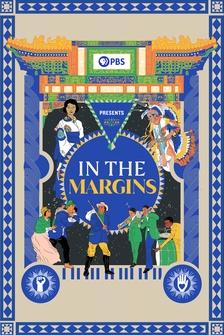Did you know that Rosa Parks was a hardcore civil rights activist?
So why are we told that she was a tired old lady on a bus?
Especially, since she wasn't even the first black woman to refuse to give up her seat in Montgomery, Alabama?
So let's get something straight right up front.
Rosa Parks wasn't just a tired lady on a bus, she was a boss.
But the story of Rosa Parks as taught in many schools and spoken about in the media, is usually truncated to a very specific set of biographical details.
And it goes something like this: The black seamstress was riding a bus in Montgomery, Alabama in 1955.
The buses were segregated with designated sections for black riders and white riders and when Parks was asked to give up her seat for a white man she refused.
Her subsequent arrest and fine for violating segregation laws led local black leaders to organize the Montgomery Bus Boycott, led by Dr. Martin Luther King Jr.
The boycott lasted from December 5th 1955 until December 20th 1956, during which black community members refused to ride the bus until the segregated seating ended.
The boycott concluded when the Supreme Court ordered Alabama to integrate its buses and both Reverend King and Parks went on to become national figures in the US Civil Rights Movement of the 20th century.
But while that narrative presents some key details of the story, it also distorts or eliminates others.
And the result is a massive simplification of Parks' years of activism on behalf of the NAACP, her advocacy for black women sexual assault survivors, and her lifetime of work that extended far beyond the end of the Montgomery Bus Boycott in 1955.
So to begin expanding the story of Parks' narrative and why we rarely, if ever, hear about it we should first ask ourselves: What does this story not tell us about Parks' early life and activism?
Born in Tuskegee Alabama in 1913, Rosa Louise McCauley grew up in the state.
At age 11 she enrolled in the Montgomery Industrial School for Girls, also known as Miss White's School for Girls which was founded by white women from New England with a mission to educate black girls in "domestic skills as well as academic subjects."
In her book Freedom's Daughters: The Unsung Heroines of the Civil Rights Movement from 1830 to 1970 Lynne Olson notes that the school was set on fire TWICE because the curriculum included ideas of racial equality.
Parks herself wrote that at the school "What I learned best was that I was a person with dignity and self-respect, and I should not set my sights lower than anybody else just because I was black."
I'm not crying you're crying.
After taking some time away from school to take care of sick family members, Rosa married Raymond Parks at age 19 and received her high school diploma a few years later.
Both she and her husband were activists and protesters.
And this role didn't come without great danger or personal risk.
When 2 of her husbands' fellow organizers were killed Parks worried that, "Every time he was at those meetings with those people I wondered if he would come back alive..." Which is not exactly the kind of quote you'd expect to hear from an unassuming old lady on a bus.
In 1943, Rosa Parks joined the NAACP and was asked to take the minutes for the meetings because the male leaders decided that they needed a secretary.
So clearly the civil Rights movement hadn't exactly caught up to full fledged feminism at this point.
But, working with E.D.
Nixon, the president of the NAACP Montgomery chapter, Parks went on to organize demonstrations and actions throughout the 1940s and 1950s such as the NAACP Youth Council, and investigating the 1944 case of Recy Taylor, a black sharecropper and mother whose courageous search for justice is the subject of the new documentary The Rape of Recy Taylor.
So despite the popular narrative that Parks was just a tired seamstress who unknowingly sparked a national and international response with her refusal to give up her seat, she was very clearly making a conscious choice to fight against injustice and her years of activism extends far before her 1955 arrest.
And that leads us to the next question: What actually happened on the day of Parks' arrest?
So the first misleading detail of the more popular story is that Rosa Parks refused to stand up from her seat on the bus because she was tired after returning home from work.
But as Parks' herself noted in her autobiography, "People always say that I didn't give up my seat because I was tired, but that isn't true.
I was not tired physically... No, the only tired I was, was tired of giving in."
And although there is often an over emphasis on the portion of the history where Parks was returning home from her job, she actually subsequently lost her job for her association with the movement.
But Parks' intention wasn't necessarily to spur the onset of the larger boycott.
And she also wasn't the first black woman who had refused to give up her seat.
On March 5th 1955, nine months before Rosa Parks, 15 year old Claudette Colvin also refused to move from her seat for a white passenger.
And although numerous black women had protested or refused to give up their seats, most were fined and released without much attention being drawn to their individual cases.
But Colvin was also one of the four plaintiffs in Browder v. Gayle, the case that eventually overturned segregated buses in Alabama.
So that leads us to another important question: Why did Parks' case become national news while Colvin's and other black women's did not?
Colvin speculates that her narrative went largely untold as a predecessor to Parks' because the NAACP felt that the adult, stately, and reserved Parks presented a stronger image around ideas of black uplift.
Colvin felt she was largely excluded from the narrative in the public eye because she was young, and later became a teen mother, so the male leadership of the NAACP in Montgomery decided that Parks' image more closely aligned to their decision to challenge the segregation of the buses.
Also leaders in Alabama were advocating for a bus boycott before Parks' arrest.
She was chosen as a leader of the movement because of her work with the NAACP and her demeanor.
But the bus boycott wasn't a spur of the moment decision, but rather the result of careful planning and advocacy that went on for over a year.
So although Parks' actions were portrayed as spontaneous, the subsequent legal battles and public actions were well planned and well orchestrated on the part of community leaders and Parks herself.
Parks later went on to become a lifelong advocate for equality before her death in 2005.
And that leads to our final question Why do we often only hear a simplified version of Parks' story in popular retellings?
While there's no one answer to this question, I've given it some thought and here are some potential reasonings.
Although the bravery of Parks' activism and the success of the Montgomery bus boycott is celebrated today, the work she did during her lifetime to support civil rights wasn't always popular or safe.
And in creating our country's history of itself, often on the way to spreading and telling stories more broadly (which is important work since these stories deserve to be told), there's also a rush to simplify.
But the effort to focus on individual seismic events, like the Montgomery bus boycott, often trims the complexity of the biographies of public figures like Parks and Dr. King.
So Parks was shifted from a radical and dedicated activist whose effort spanned decades, to a tired woman on the bus in order to universalize her story, which is detrimental to the accuracy of her larger body of work.
So how does it all add up?
Well despite the popular narrative of a shy and unassuming seamstress taking a stand by keeping her seat, the complexity of Rosa Parks' narrative far exceeds such a simple equation.
But as for Claudette Colvin, when interviewed for NPR in 2009 she noted that the day of her arrest was during her school's curriculum for Negro History Month and she said, "My head was just too full of black history, you know, the oppression that we went through.
It felt like Sojourner Truth was on one side pushing me down, and Harriet Tubman was on the other side of me pushing me down.
I couldn't get up."
Clearly telling historical narratives with greater detail and accuracy can inspire us all to greater action.
So rather than viewing stories like Colvin's and Parks' as passive decisions that lead to larger actions we should stop to remember the very active and courageous work these black women did in the advancement of US Civil Rights cases in the 20th century.
So what do you think?















